Integration Of Continuous Biological And Chemical (Ozone) Treatment Of Domestic Wastewater: 2. Ozonation Followed By Biological Oxidation
Source: https://www.soci.org
Author: Fernando J Beltra´n, Juan F Garcı´a-Araya and Pedro M A´lvarez
A combined chemical -biological treatment, ozonation plus activated sludge, of domestic wastewater was studied and the results were compared with those shown in a previous study where the sequence of oxidation was reversed. Experimental results indicated wastewater preozonation to be an effective pretreatment step for domestic sewage. The goals of ozonation were the improvement in effluent biodegradability and the removal of certain biorefractory organics as aromatic and unsaturated compounds.
Only logged in customers who have purchased this product may leave a review.
Related books
Governance of Artificial Intelligence in Water and Wastewater Management: The Case Study of Japan
Governance of Artificial Intelligence in Water and Wastewater Management: The Case Study of Japan
Analysis of the Flux Performance of Different RO/NF Membranes in the Treatment of Agroindustrial Wastewater by Means of the Boundary Flux Theory
Analysis of the Flux Performance of Different RO/NF Membranes in the Treatment of Agroindustrial Wastewater by Means of the Boundary Flux Theory
Emerging desalination technologies for water treatment: A critical review
Emerging desalination technologies for water treatment: A critical review
Perspectives And Applications Of Nanotechnology In Water Treatment
Perspectives And Applications Of Nanotechnology In Water Treatment
Determination of Optimal Operating Condition in Nanofiltration (NF) and Reverse Osmosis (RO) During The Treatment of a Tannery Wastewater Stream
Determination of Optimal Operating Condition in Nanofiltration (NF) and Reverse Osmosis (RO) During The Treatment of a Tannery Wastewater Stream
Sludge Biotic Index
Abstract
This study aimed to determine the relationship between activated sludge microfauna, the sludge biotic index (SBI) and the effluent quality of a full-scale municipal wastewater treatment plant (WWTP) working with shock organic and ammonium loadings caused by periodic wastewater delivery from septic tanks. Irrespective of high/low effluent quality in terms of COD, BOD5, ammonium and suspended solids, high SBI values (8–10), which correspond to the first quality class of sludge, were observed. High SBI values were connected with abundant taxonomic composition and the domination of crawling ciliates with shelled amoebae and attached ciliates. High SBI values, even at a low effluent quality, limit the usefulness of the index for monitoring the status of an activated sludge system and the effluent quality in municipal WWTP-treated wastewater from septic tanks. It was shown that a more sensitive indicator of effluent quality was a change in the abundance of attached ciliates with a narrow peristome (Vorticella infusionum and Opercularia coarctata), small flagellates and crawling ciliates (Acineria uncinata) feeding on flagellates.
Sludge Biotic Index
Abstract
This study aimed to determine the relationship between activated sludge microfauna, the sludge biotic index (SBI) and the effluent quality of a full-scale municipal wastewater treatment plant (WWTP) working with shock organic and ammonium loadings caused by periodic wastewater delivery from septic tanks. Irrespective of high/low effluent quality in terms of COD, BOD5, ammonium and suspended solids, high SBI values (8–10), which correspond to the first quality class of sludge, were observed. High SBI values were connected with abundant taxonomic composition and the domination of crawling ciliates with shelled amoebae and attached ciliates. High SBI values, even at a low effluent quality, limit the usefulness of the index for monitoring the status of an activated sludge system and the effluent quality in municipal WWTP-treated wastewater from septic tanks. It was shown that a more sensitive indicator of effluent quality was a change in the abundance of attached ciliates with a narrow peristome (Vorticella infusionum and Opercularia coarctata), small flagellates and crawling ciliates (Acineria uncinata) feeding on flagellates.

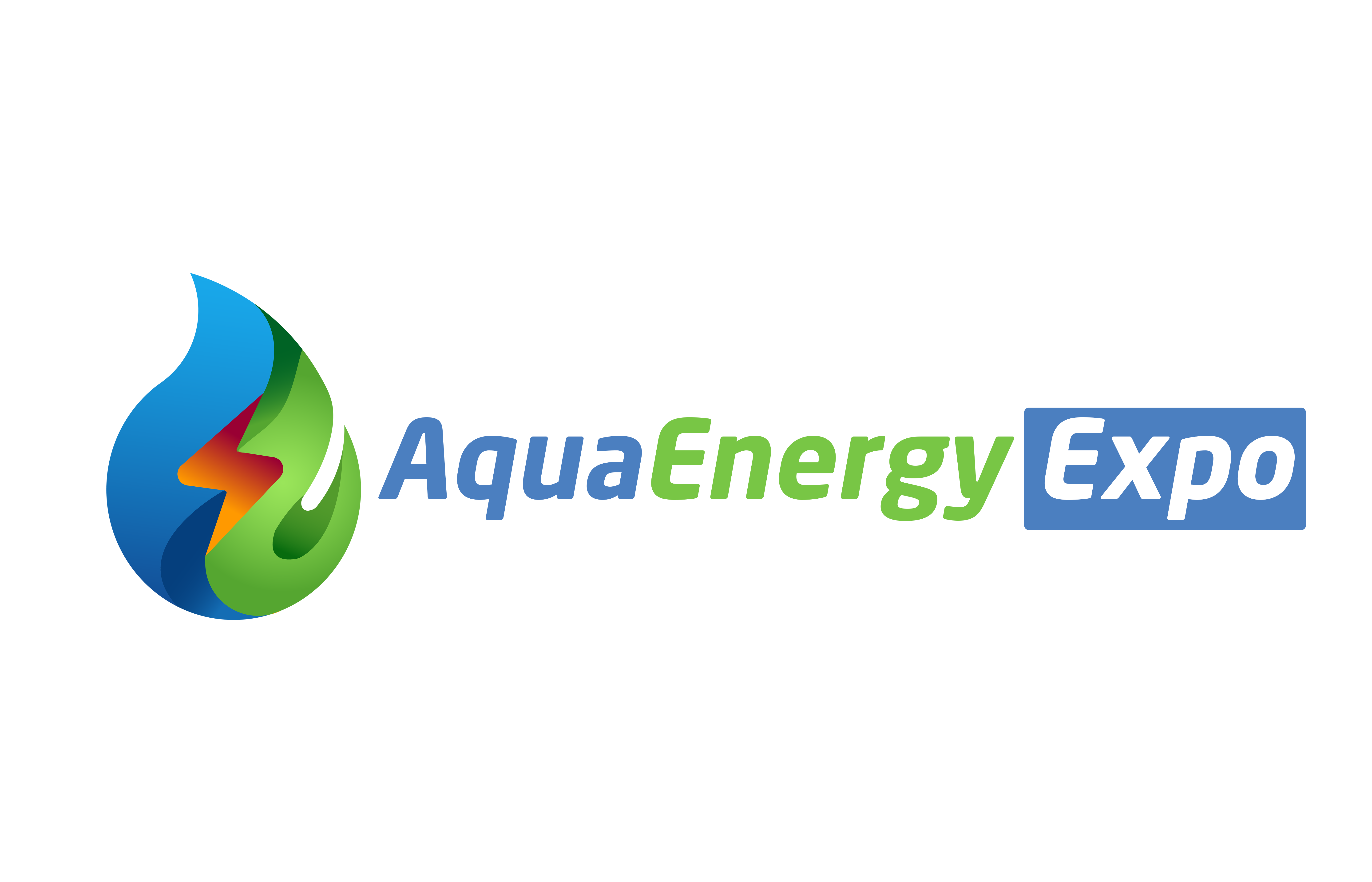

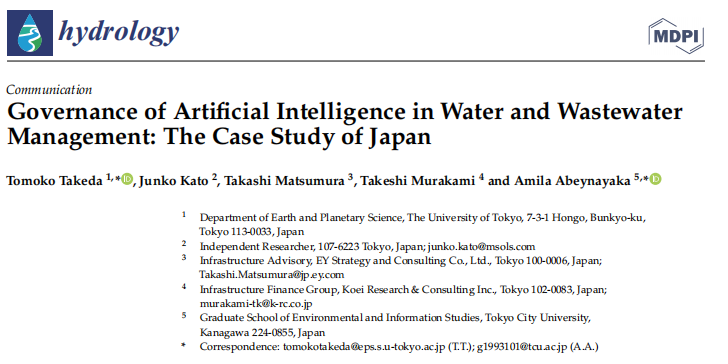
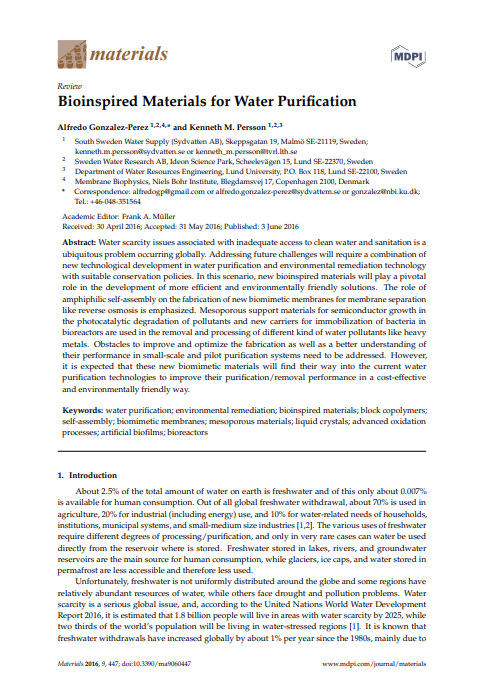
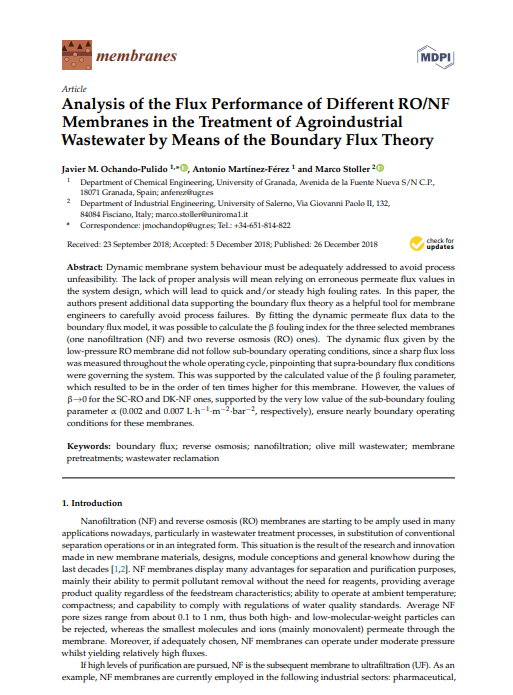
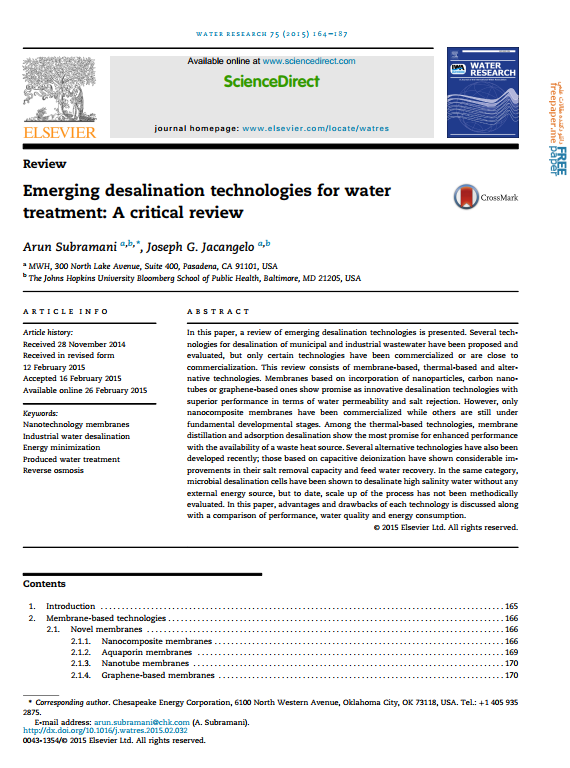
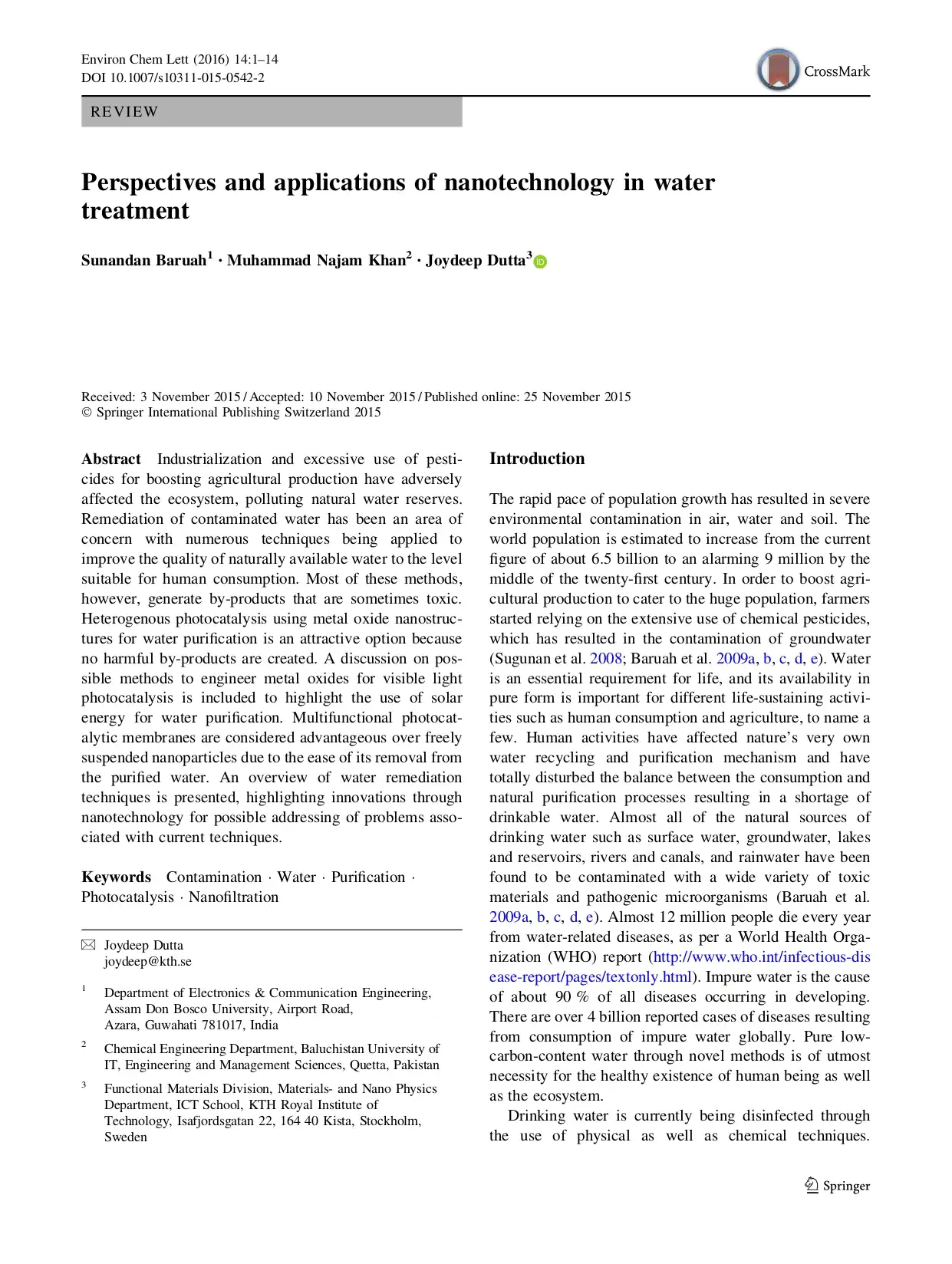
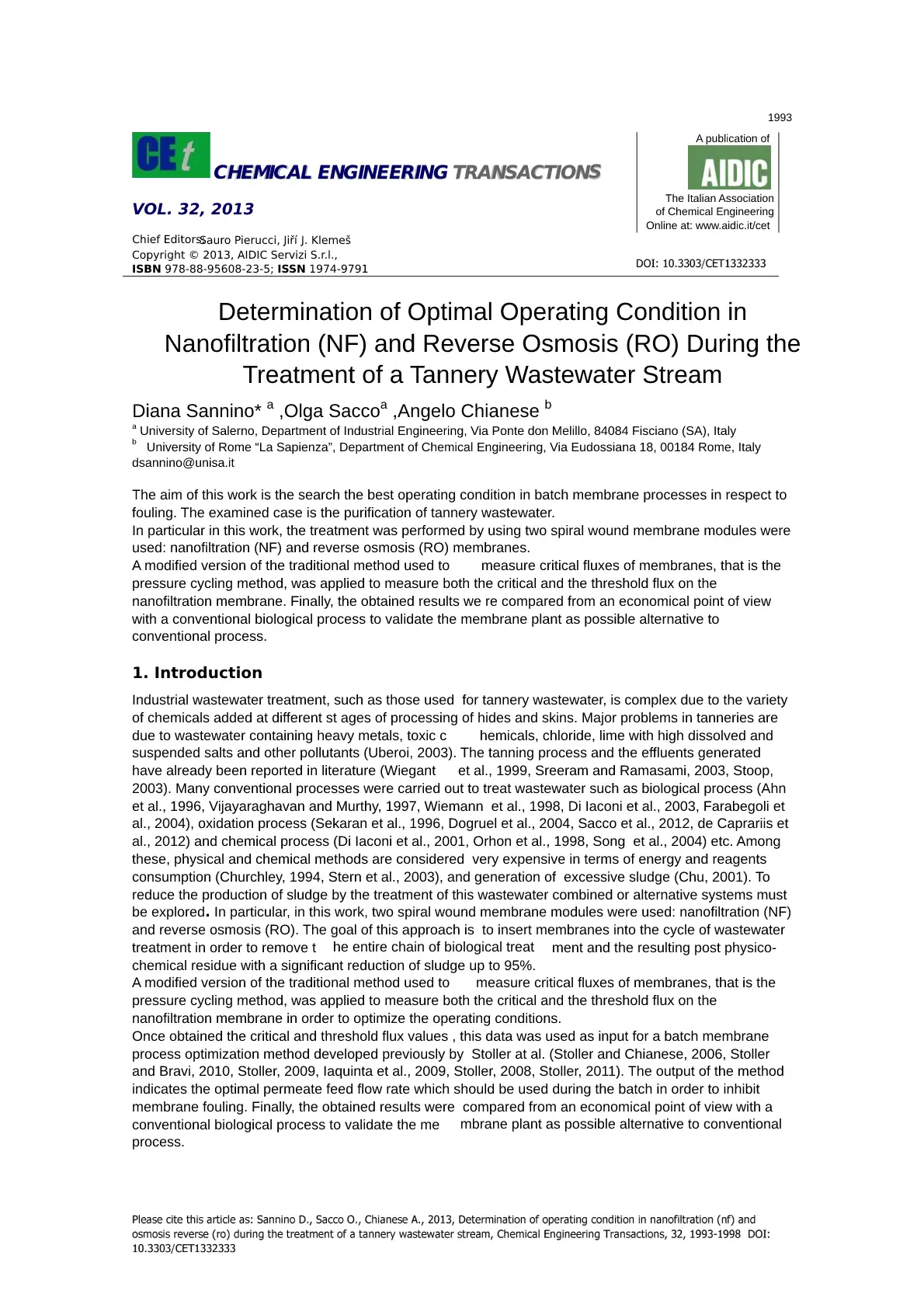
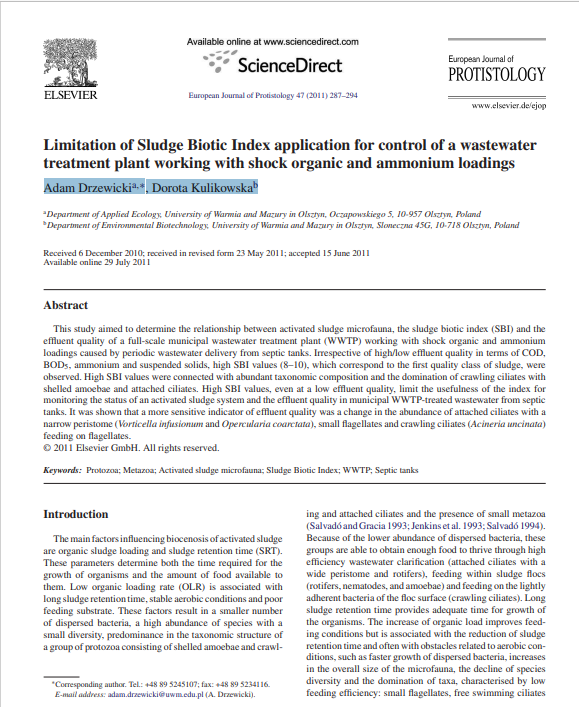
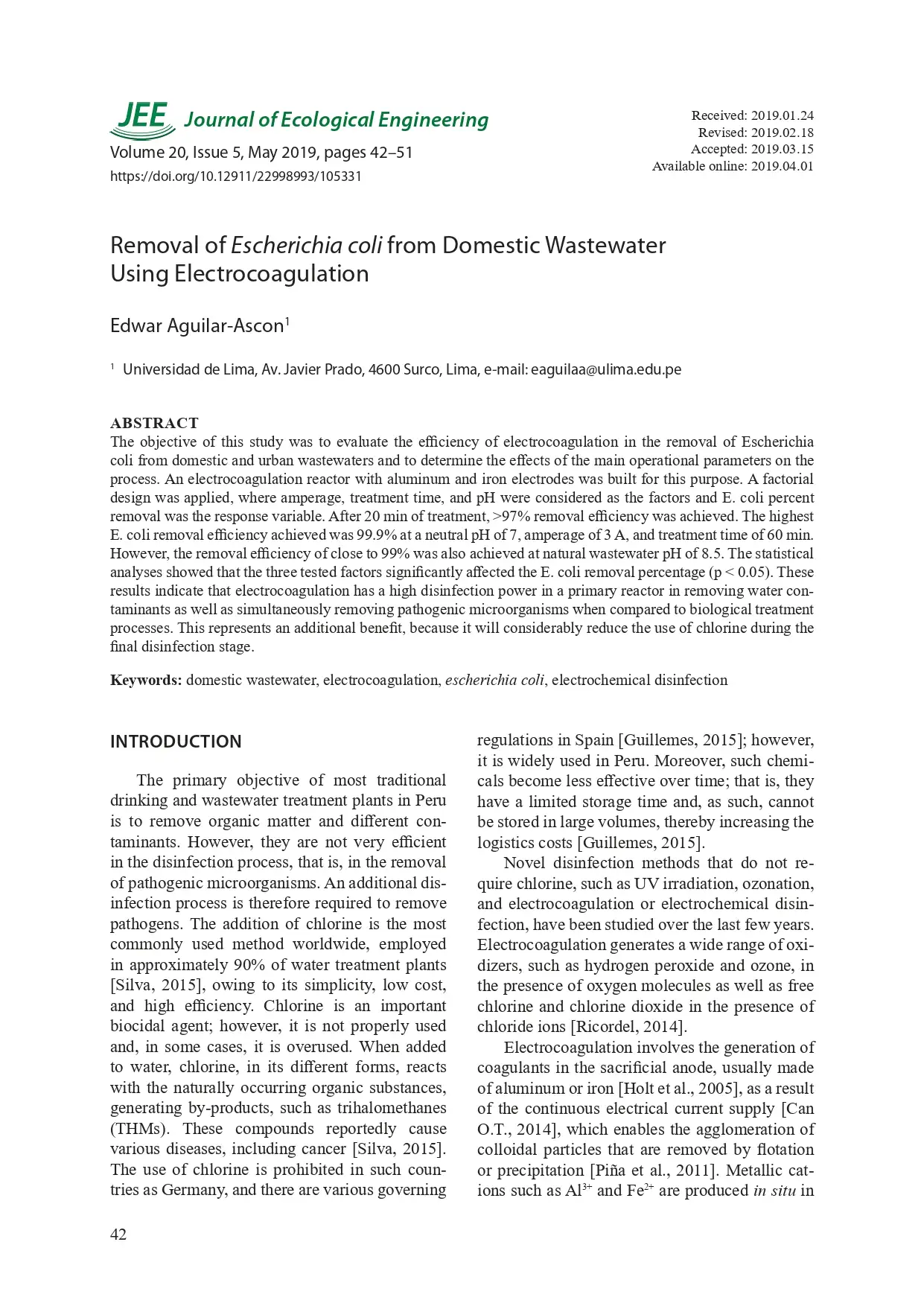
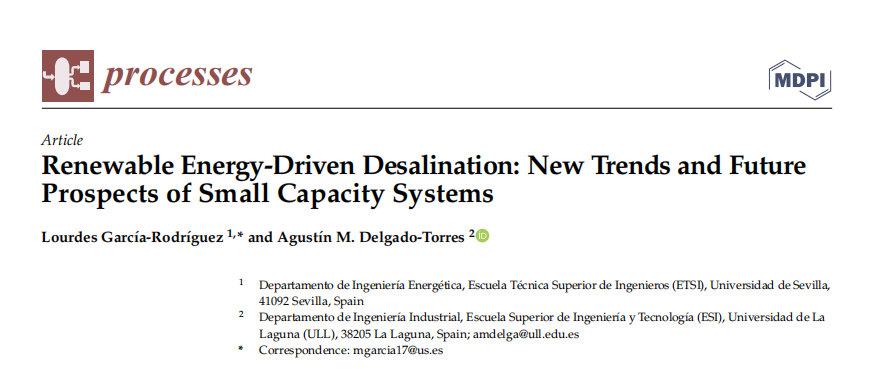

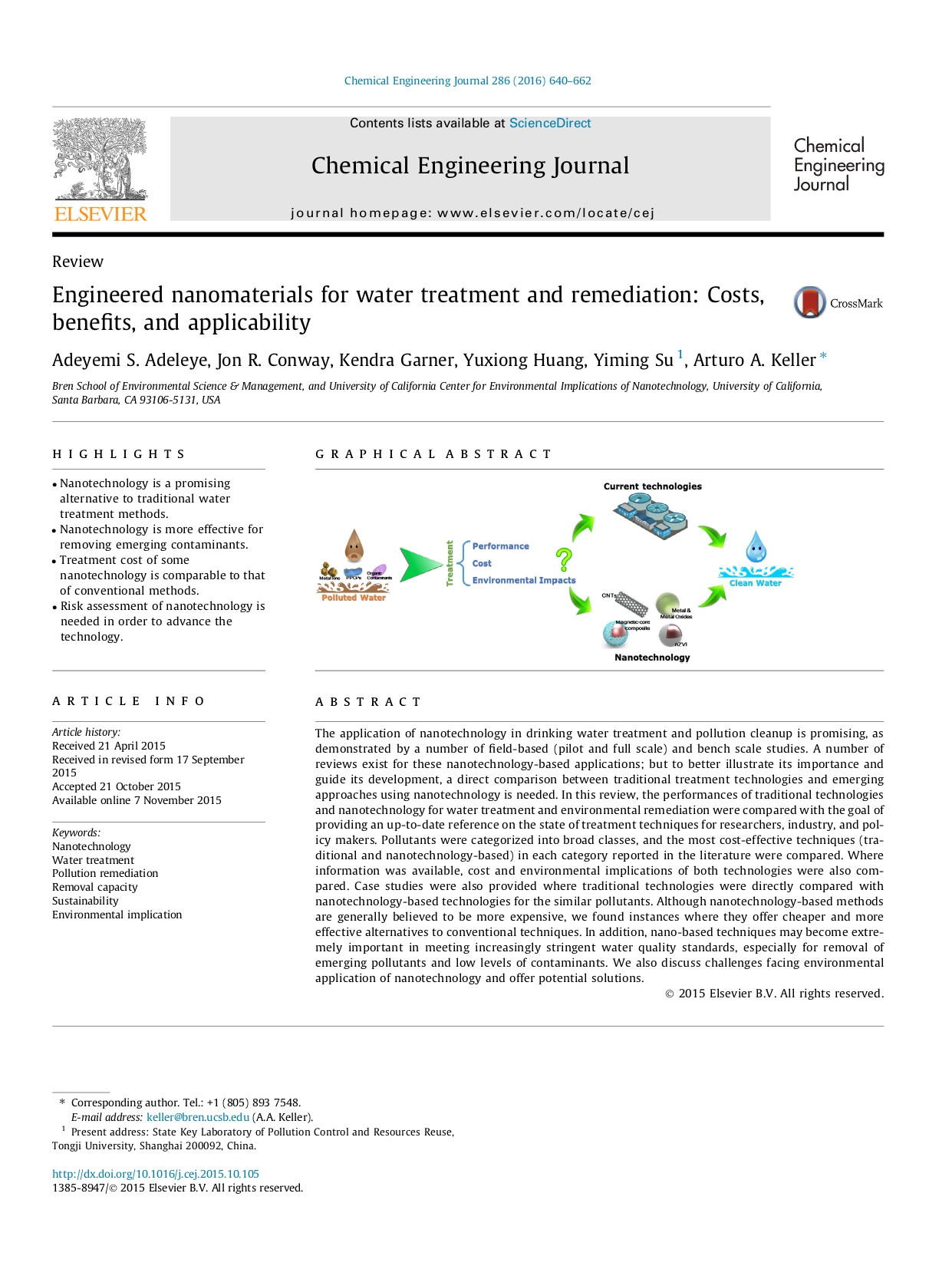
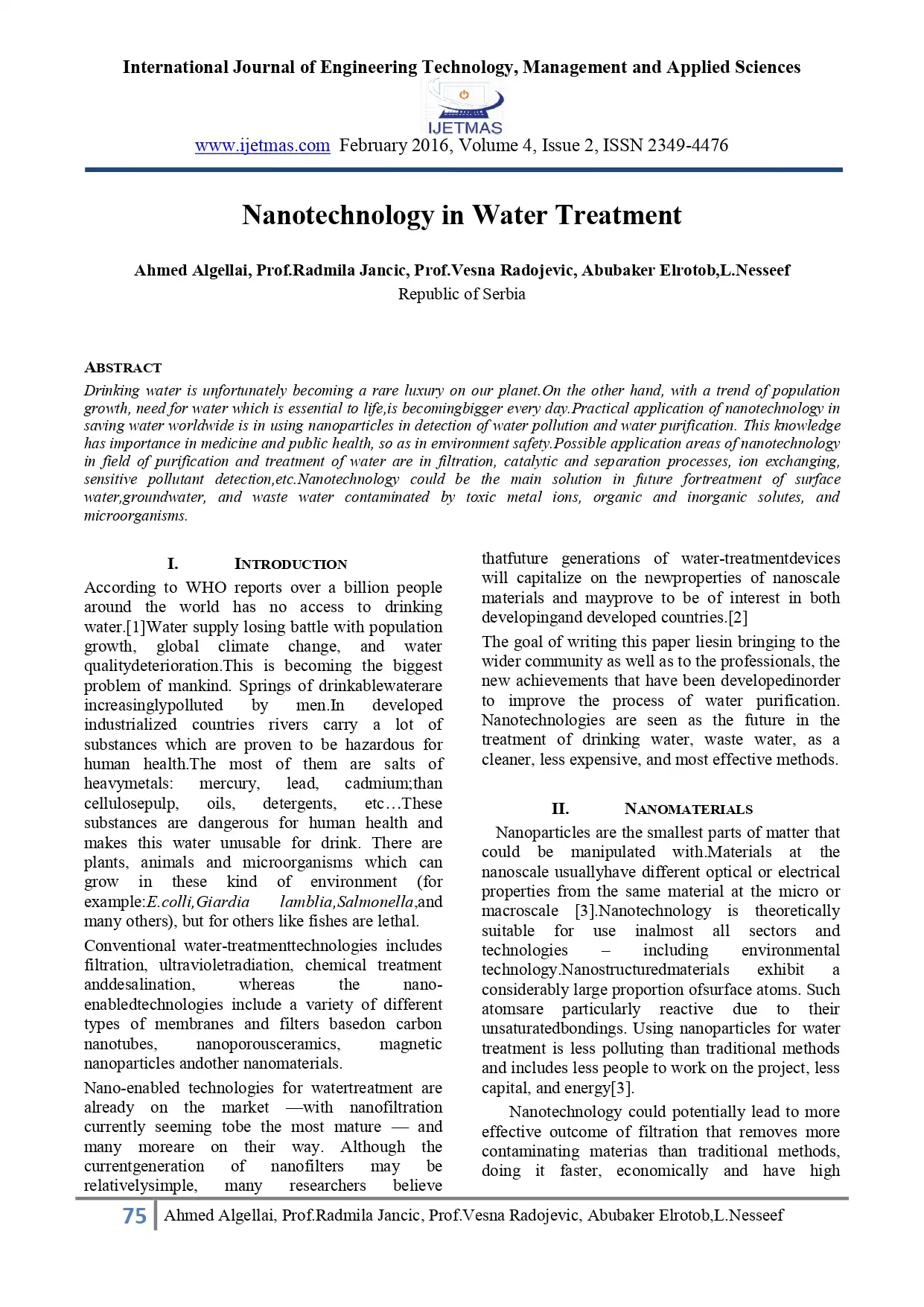
Reviews
There are no reviews yet.